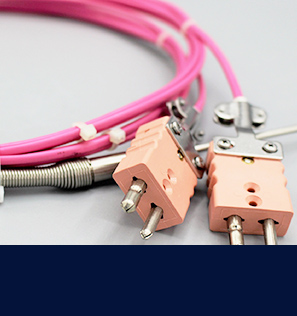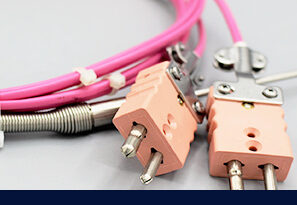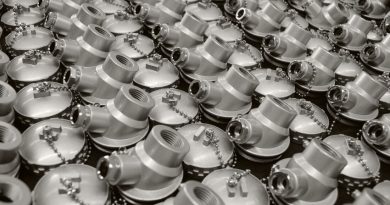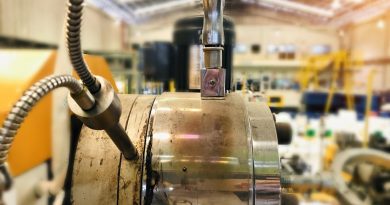Enhancing Accuracy with Platinum Thermocouple Wire Solutions
Temperature measurement is critical in various industries, from manufacturing to scientific research. One of the most effective ways to ensure precise temperature readings is through the use of platinum thermocouple wire. These wires provide not only reliability but also exceptional accuracy. In this article, we will explore the importance of platinum thermocouples, their advantages, best practices for installation, maintenance tips, and common challenges faced in thermal measurements, all supported by industry standards..
Understanding Platinum Thermocouple Wire: A Primer for Temperature Sensors
What is a Thermocouple?
A thermocouple is a temperature sensor that consists of two different metals joined at one end. When the junction is heated or cooled, it produces a voltage that can be measured and translated into temperature. Platinum thermocouple is specifically designed to provide accurate and reliable temperature readings in various applications, including high-temperature environments like metal processing and glass manufacturing.
Types of Thermocouples
Thermocouples are classified into several types based on the materials used. The most common types include:
- Type K (Chromel-Alumel): Widely used but has a lower accuracy compared to platinum.
- Type J (Iron-Constantan): Suitable for lower temperature ranges but less stable over time.
- Type T (Copper-Constantan): Good for cryogenic applications but not as versatile.
- Type R/S/B (Platinum-Rhodium): Offers high accuracy and stability, ideal for high-temperature applications.
Among these, the platinum rhodium thermocouple (Type R or S) is often preferred for its superior performance, often cited in studies such as those by the National Institute of Standards and Technology (NIST).
The Role of Platinum in Thermocouples
Platinum is a noble metal known for its excellent electrical conductivity, high melting point, and resistance to oxidation. When alloyed with rhodium, it enhances the thermoelectric properties, making it an ideal choice for precision temperature measurements.
Why Choose Platinum Rhodium Thermocouple Over Other Materials for Thermocouples?
Superior Accuracy and Stability
One of the primary reasons for choosing platinum thermocouples is their superior accuracy. Platinum’s stable thermoelectric properties ensure that temperature readings remain consistent over time. Unlike other materials that may degrade or drift, platinum thermocouples maintain their calibration, making them ideal for high-precision applications.
High-Temperature Resistance
Platinum thermocouples can withstand extreme temperatures, making them suitable for a range of industrial applications. They can operate effectively at temperatures exceeding 1,000°C (1,832°F), which is crucial for processes that involve high heat, such as metal processing and glass manufacturing.
Corrosion Resistance
The inherent corrosion resistance of platinum ensures that thermocouples remain functional even in harsh environments. This durability reduces maintenance costs and prolongs the lifespan of temperature sensors, providing a more reliable solution over time.
Key Advantages of Using Platinum Thermocouple Solutions
Enhanced Response Time
Platinum thermocouples exhibit a rapid response time to temperature changes. This feature is particularly beneficial in dynamic environments where quick temperature fluctuations occur, such as in chemical processes and food manufacturing. For instance, a case study from a food processing plant demonstrated that switching to platinum thermocouples reduced response times by 40%, leading to more efficient operations.
Wide Temperature Range
Platinum thermocouples can measure a broad range of temperatures, from cryogenic levels to high temperatures exceeding 1,600°C (2,912°F). This versatility makes them suitable for various applications across different industries, including aerospace, automotive, and healthcare.
Reduced Electrical Noise
Electrical noise can significantly affect the accuracy of temperature readings. Platinum thermocouples are less susceptible to electrical interference, providing cleaner signals and more reliable data, which is essential for critical measurements in scientific and industrial applications.
Compatibility with Various Applications
Platinum thermocouple wire is compatible with various thermocouple configurations, including exposed junctions, grounded junctions, and ungrounded junctions. This flexibility allows for a tailored approach to temperature measurement, ensuring optimal performance in different scenarios.
Maximizing Accuracy: Best Practices for Installing Platinum Thermocouples
Selecting the Right Location
When installing a platinum thermocouple, the location is crucial. Ensure that the sensing element is positioned in an area where it can accurately capture the temperature of the substance being measured. Avoid placing it near heat sources that could lead to erroneous readings.
Proper Wiring Techniques
Use high-quality platinum thermocouple wire for connections to minimize resistance and maintain accuracy. Ensure that the wire is properly insulated to prevent interference from external factors. Additionally, follow the manufacturer’s guidelines for wiring to ensure compliance with industry standards.
Calibration and Testing
Before deploying a platinum thermocouple in a production environment, it’s essential to calibrate and test it. Use a reference temperature source and compare the readings to ensure accuracy. Regular calibration checks should also be scheduled to maintain precision over time.
Insulation and Protection
Consider the environmental conditions where the thermocouple will be installed. Use appropriate insulation materials to protect against moisture, chemicals, and mechanical stress. This protection will help maintain the integrity of the thermocouple and ensure accurate readings.
Maintaining Precision: Care Tips for Your Platinum Thermocouple Setup
Regular Inspections
Frequent inspections are vital for maintaining the performance of platinum thermocouples. Check for signs of wear, corrosion, or physical damage. Any issues should be addressed immediately to prevent inaccuracies in temperature readings.
Cleaning Procedures
Dust and contaminants can affect the performance of thermocouples. Regularly clean the sensing element and the surrounding area to ensure that the thermocouple remains free from debris. Use non-abrasive cleaning solutions to avoid damaging the thermocouple wire.
Environmental Considerations
Platinum thermocouples should be protected from extreme environmental conditions that could impact their performance. Ensure that they are installed in areas with stable temperature and humidity levels, and avoid exposure to chemicals that could corrode the wire.
Replacement Protocols
Even the best thermocouples will eventually require replacement. Establish a replacement protocol based on the operational environment and usage frequency. Regularly scheduled replacements can help maintain accuracy and reliability in temperature measurements.
| Advantage | Description | Application Example |
| Enhanced Response Time | Rapid response to temperature changes is crucial in dynamic environments. | Food processing plant reduced response times by 40%. |
| Wide Temperature Range | It can measure temperatures from cryogenic levels to over 1,600°C, applicable in various industries. | Aerospace testing at extreme temperatures. |
| Reduced Electrical Noise | Less susceptible to electrical interference, ensuring cleaner signals for reliable data. | Scientific experiments requiring high precision. |
| Compatibility with Various Applications | Works with different thermocouple configurations, allowing tailored temperature measurement solutions. | Custom setups in lab environments. |
| High-Temperature Resistance | Can operate effectively at temperatures exceeding 1,000°C, suitable for high-heat processes. | Metal processing and glass manufacturing. |
| Corrosion Resistance | Durability in harsh environments reduces maintenance costs and extends lifespan. | Chemical processing industries. |
Common Challenges with Thermal Measurements and How to Overcome Them
Electrical Interference
Electrical noise is a common challenge when measuring temperature with thermocouples. To mitigate this issue, use twisted pair wiring for connections to reduce electromagnetic interference. Additionally, keep thermocouple wires away from power lines and other sources of electrical noise.
Temperature Gradients
Temperature gradients can lead to inaccurate readings. To minimize this effect, ensure that the thermocouple is properly positioned and that the sensor is adequately shielded from drafts and other environmental factors that could cause fluctuations in temperature.
Calibration Drift
Over time, thermocouples can experience calibration drift, leading to inaccuracies. Regular calibration checks should be performed to identify and correct any drift. Implementing a routine calibration schedule can help maintain the accuracy of the thermocouple.
Selecting the Right Thermocouple Type
Choosing the wrong type of thermocouple can result in inaccurate readings and unreliable data. Understanding the specific requirements of your application, including temperature range and environmental conditions, is essential for selecting the appropriate platinum thermocouple wire.
In summary, platinum thermocouple wire solutions provide unparalleled accuracy and stability for temperature measurement in various applications. By understanding the advantages of platinum over other materials, following best installation practices, and implementing proper maintenance, you can maximize the performance of your thermocouples.
Whether you’re in manufacturing, research, or any field that relies on precise temperature readings, investing in platinum rhodium thermocouples can significantly enhance your operational efficiency. By addressing common challenges and adhering to best practices, you will ensure that your temperature measurement systems remain reliable and accurate for years to come.
For more information on selecting the right thermocouple for your needs, consider visiting this resource to explore various thermocouple types and their applications. You can also utilize tools like this thermocouple selector to help you choose the best option for your specific requirements.



